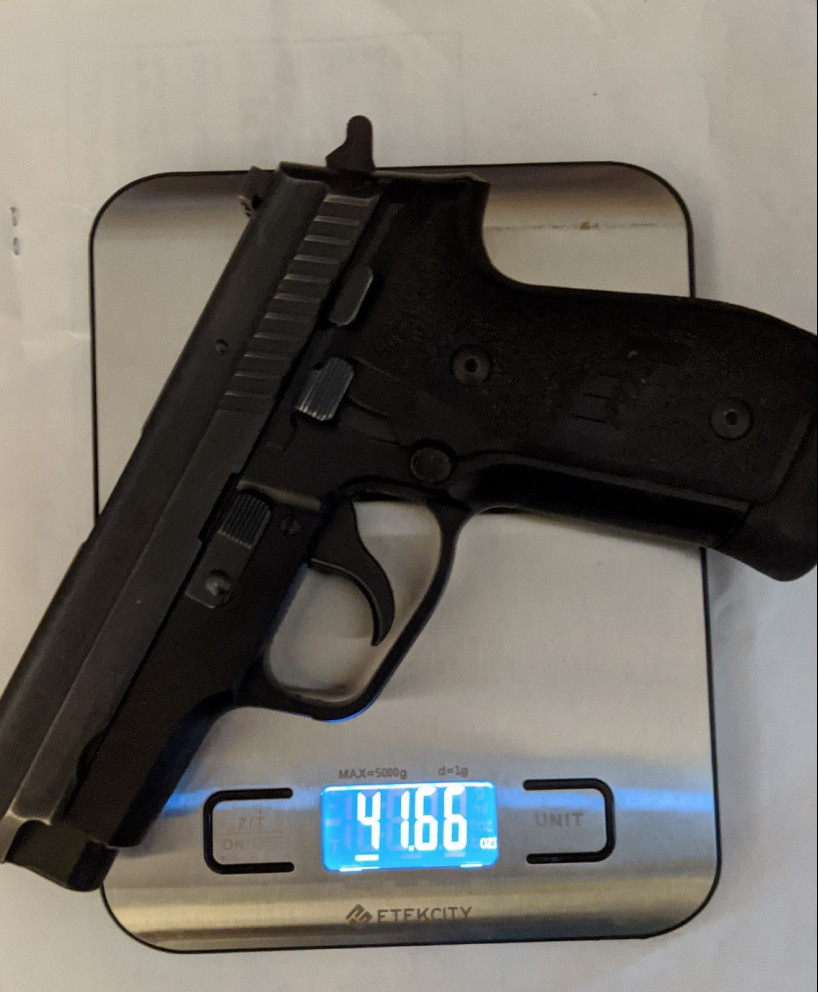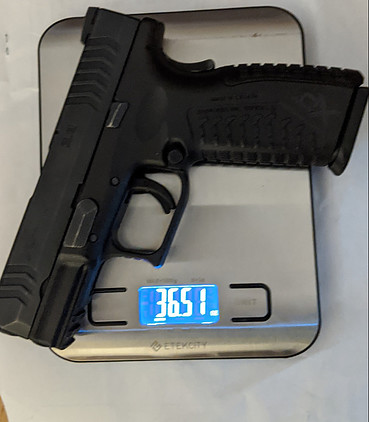This will be a short article. Why? Because it’s not really important whether you choose metal or polymer for your handgun’s frame. This conversation usually devolves into something akin to religious, political, or tribal views. Reason and reasonableness are right out. “Glocks are ugly” is a common refrain. Which they are but I’ll try to do better.
Table of Contents
History (short version)
I’m not going all the way back to the invention of gunpowder. If you’re interested, Wikipedia has a good article about it. I’m concerned with the mid-1800’s when the modern patterns began to coalesce: repeating handguns and rifles.
In the beginning there was metal. Steel, specifically. It’s strong. Comparatively light. Easy to maintain. For the technology of the day it was an excellent choice. And it still is, even though it’s not light compared to other alternatives.
Then came aluminum. It’s been around for a couple hundred years and started coming into general use in the early 1900s. Aluminum framed guns really took off after WW II. It seems that all that work on aircraft had some benefits: new methods of creating and working with the metal and new alloys that were lighter and stronger than just plain old aluminum.
Then, in the 1980s, Gaston Glock came up with his creation. The Glock was not the first polymer gun, but like I said, I’m going for the short version here. And it was by far the most successful of the breed and ushered in the era of the plastic gun. Who knows what might have happened if it hadn’t been so damn ugly.
Cost
Polymer is cheaper. A lot cheaper. For the closest apples to apples comparison I can think of let’s look at Sig Sauer. The P229 and the SP2022 are very, very similar. DA/SA, 15 rounds in 9mm, 3.9″ barrel. At Guns.com the P229 is about a grand. The SP2022 is roughly half that.
Now, I’m not normally one to let a few dollars stand in the way of what I want but that’s a big difference. Since I’ve never fired an SP2022 I can’t definitively say that it’s as good as the P229. (Update: I have, in fact, fired an SP2022 now.) It is still a Sig and damn, how much worse can it be? Even in this pandemic world I can buy a lot of ammo for $500. Assuming I can find it, of course.
Weight/Recoil
The weight of a gun is an interesting specification. A lighter gun is easier to carry while a heavier gun is easier to shoot. Makes sense, doesn’t it? The more a gun weighs the more mass there is to soak up recoil.
However, there’s a theory that polymer’s ability to flex helps reduce felt recoil. While I have a P229 I do not, sadly, have an SP2022 for testing. I do have a Springfield XDM. Both are in .40 S&W. The Springfield has a 3.8″ barrel and the Sig a 3.9″. Close enough. See pictures below for their relative weights.


Both guns were loaded with Winchester Ranger 180 gr bonded jacketed hollow points. The Springfield mag holds 16 rounds and I had my 14 round magazine in the Sig. So I removed two rounds from the Springfield to make it as close as I could get it. As you can see, the Sig is just over 5 oz heavier.
And the result? The Springfield had less recoil. A lot less. Muzzle flip was noticeably reduced and second shots came quicker.
I have to say that I was surprised. I thought that idea about polymer reducing recoil was silly. Now, these are not the same gun. The Springfield’s grip is different in ways other than its materiel. Larger, for one thing. So this is not exactly a scientific test and it proves nothing. It’s just an indicator. This theory seems a good candidate to continue testing. Yes, I know. I could just go by an SP2022 in .40 S&W to get an apples to apples comparison with the P229. And if that ever happens I’ll let you know but I recommend against holding your breath. I really don’t need another .40, thanks. And buying both in 9mm seems excessive.
Temperature
This topic didn’t really occur to me when coming up with an outline for this article. Then I left my Browning Hi-Power in the Arizona sun for a short time while shooting out in the desert a couple weeks ago. That’s a bad idea no matter what your material but I have definitively proven to myself that metal is worse than plastic. Yes, that means I’ve done it with plastic, too. Neither are pleasant to be picked up after being in the sun but the metal gun is not really holdable without gloves. The plastic is not comfortable but can still be held.
I have no idea how this works in cold weather, but I’ve seen “A Christmas Story” so I assume metal is more affected by cold, too.
I’m currently in the market for a rifle. I tend to look at black, synthetic stocks because I aesthetically prefer black to FDE or some of the other colors out now. I may reconsider that. Camo is still right out, though.
So, which is it?
This section is going to be somewhat different than I’d originally planned on. I’ve always been in the camp that thinks polymer is OK but metal is king and I figured I’d be saying that here.
Based on my little test I’m reconsidering my views. Sure, it was a single test between two similar but not identical guns but the result was the opposite of what I’d expected. Maybe I should go find an SP2022 somewhere. The two Sigs are the only guns I can think of that are almost identical with different materials. And another Sig can never hurt.
I mentioned above that this type of discussion can revolve into basically a religious debate. I, a charter member of the Metal church, seem to have become agnostic. I was always going to end up saying that you should choose whatever works best for you and your circumstances, of course, but I think I’ve been unnecessarily restricting my own options. I think I’m much more open to another plastic gun than I was.
I still think metal (that hasn’t been heated in the AZ sun) feels better in my hand and that is a consideration but it’s not the only one. For that matter, people make fun of this criteria but I think aesthetics matter. 1911’s, Beretta 92’s, and CZ 75’s are prettier and it’s OK to consider that.
Besides, Glocks are still ugly.